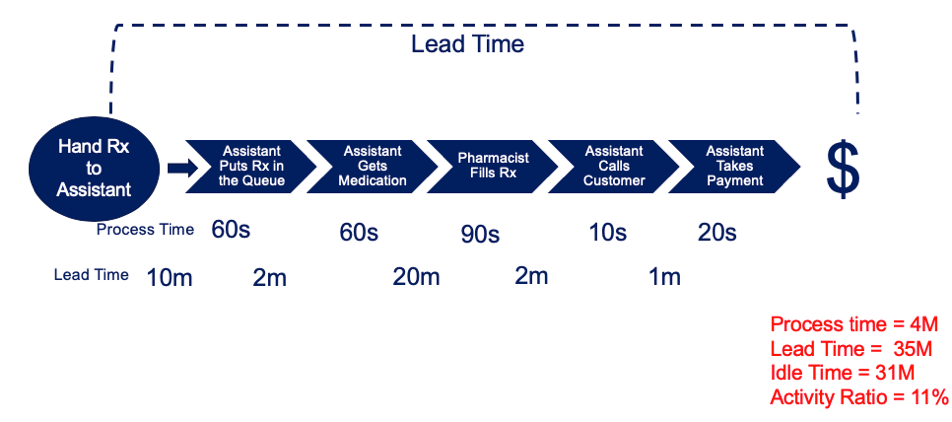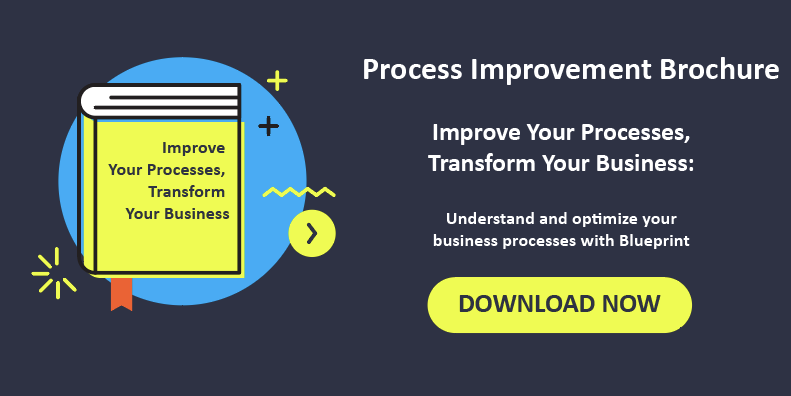The Value in Value Stream Mapping
Organizations are starting to realize that in order to stay competitive, they have to switch the way they are working; they have to transition from a project-oriented approach to a product-delivery model. The best way to make that change is to start using value streams and value stream mapping.
Employing value stream mapping as your management framework for digital products and services is absolutely necessary to solve two challenges:
- To re-orient everyone to focus on delivering maximum value to customers instead of just finishing a project on time and within budget.
- To optimize the whole process or system instead of only a part of it which would only lead to marginal gains.
It’s not the only thing large, regulated enterprises should do, but it’s a good place to start. In fact, it’s difficult to identify what other areas of your organization need improving until you start using value stream mapping.
What is Value Stream Mapping?
Value stream mapping is a technique to describe your organization’s processes while providing clarity and uncovering waste.
Forrester describes value streams as:
“A combination of people, processes, and technology that maps, optimizes, visualizes, and governs business value flow (including epics, stories, work items) through a heterogenous enterprise software delivery pipeline.”
A value stream is initiated by triggering an event; the most common trigger is some sort of customer request. Once the request is made, an organization goes through a series of steps or processes before the request is fulfilled or value is delivered to the customer.
Filling a prescription: A simple example of a value stream
A simplified example of a value stream is getting a prescription filled. In addition to measuring the total lead time, it’s important to measure the lead time and process time of each step.

Calculating this across the entire value stream of getting a prescription filled demonstrates that the actual work took 4 minutes, while it took a total of 35 minutes to fulfill the customer’s request. That means the work sat idle for 31 minutes and was only worked on 11% of the time.
This is clearly an example of a non-optimized process. There is a good chance that anyone performing the same exercise in a large enterprise would find the same sub-optimal discrepancy between lead time and processing time in their own organization.
Value Stream Mapping in Software Development and Delivery
Value streams by their nature are long-lasting and designed to be optimized to support an ongoing sustainable flow of work. By definition, you will only get the benefits of value stream mapping if you organize your value streams around the delivery of products.
In the context of software delivery, a value stream is akin to a product or new product family and new features or requests are the items constantly and continually flowing through a value stream—the work gets prioritized into a backlog and put into a value stream as capacity becomes available. Capacity is controlled by ‘work in progress’ limits. You can and should extend your value stream all the way back to the point in which the idea for an improvement is put into the system.
What’s in a Value Stream
A helpful way to conceptualize it is to think of the things flowing through the value stream as artifacts that live in your various systems. These artifacts are good proxies for the physical items you would see in a value stream that you would define for the delivery of physical goods like a car.
It’s helpful to think of something tangible flowing through a value stream, like the items described in Mik Kersten’s book “Project to Product: How to Survive and Thrive in the Age of Digital Disruption with the Flow Framework” such as:
- Features
- Defects
- Risks
- Debts
Another way to think of a value stream is to think of it as a network of tools where different artifacts reside. This also means that since the artifacts you are tracking are in systems – ideally in connected systems – the data you need, to track your value streams, should be accessible to you.
This should make it much easier to capture the metrics you need to measure a value stream.
Measuring Value Streams
The following are the metrics you target to continually improve within a continuous improvement program. They allow you to easily identify bottlenecks and waste in your system. Once identified, it’s much easier to develop strategies to make continual improvements:
- Process Time (PT) – The time it takes to complete a single unit of work
- Lead Time (LT) – The elapsed time from the moment work is made available
- Percent Complete and Accurate (%C&A) – Percentage of time downstream ‘customers’ receive work that is receivable as is
- Work-in Process (WIP) – Accumulation of work between or within processes
- Activity Ratio (AR) – AR = PT/LT x100 – Used to quantify flow
- Rolled %C&A – Reflects the compound effect of quality of output
Another common take on value stream metrics is:
- Flow Distribution - The proportion of each flow item within a value stream across time
- Flow Velocity – Number of flow items done in a given time
- Flow Time – Time elapsed when a flow item enters the value stream to when it is released to the customer
- Flow Load – Number of items with flow state as active or waiting
- Flow Efficiency – The proportion of time flow items are actively worked on to the total time elapsed
Your initiatives can then be tied to outcomes. The ones suggested by Mik Kersten are:
- Value – New revenue delivered over time. This is much easier to measure than say the impact of a single feature.
- Cost – In product development, this is largely made up of people costs. Since a value stream has long-lasting teams, this should be easy to get at.
- Quality – A common method is using something like the number of support calls or escaped defects.
- Happiness – This is a measure of employee happiness. A simple way to measure this is with a survey or even by looking at turnover.
Is Value Stream Mapping Scalable?
Value stream mapping is inherently scalable. If you have a portfolio of products or services, you can consolidate your value stream into a single portfolio level value stream or examine the value stream of each product and service.
It’s an impactful way to measure success for both products and services, yet for this to truly work, having a common set of metrics and following them is key.
How Blueprint Optimizes Value Stream Mapping
Blueprint is designed to empower large enterprises to optimize their value streams. With features that leverage process analysis and improvement, Blueprint helps large, regulated enterprises manage work at scale and deliver value faster than ever before.
See how Blueprint helped one customer, an independent health association improve their value streams through tangible results like completing projects 20% faster and completing requirements and user stories with 20% less effort.
To learn more about Blueprint and how it can improve your process analysis and improvement initiatives, download the datasheet.
Share this
Recent Stories

What is Value Mapping: Everything You Need to Know

The 6 Benefits of Value Mapping and Assessing Your Automation Estate


